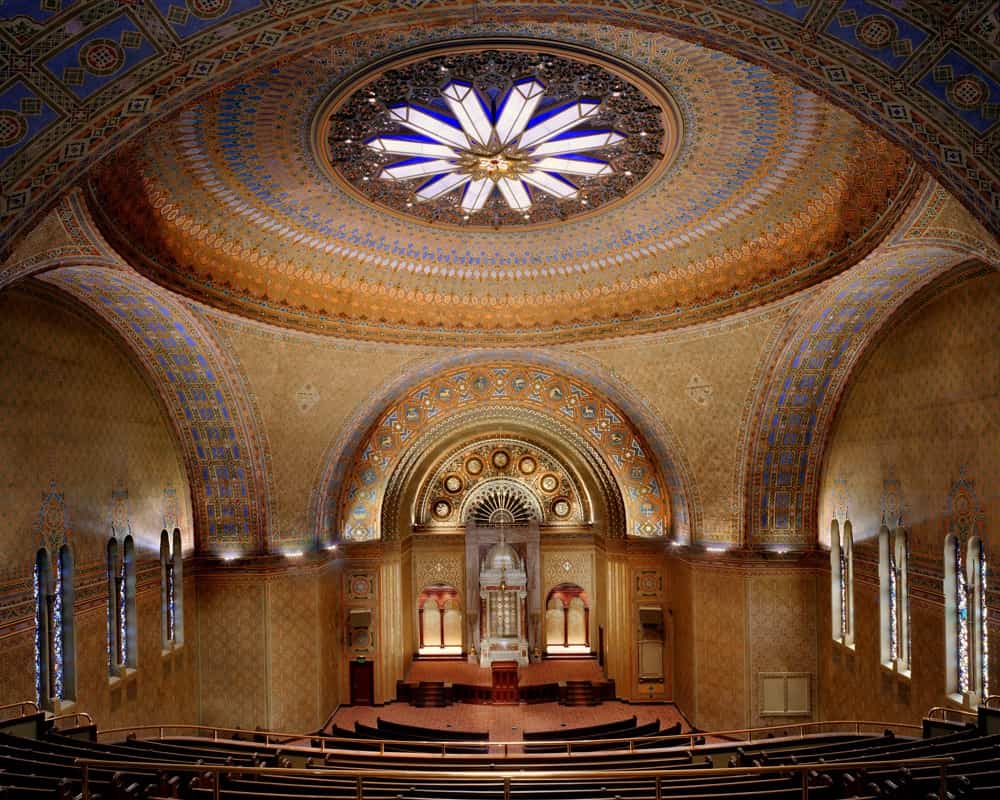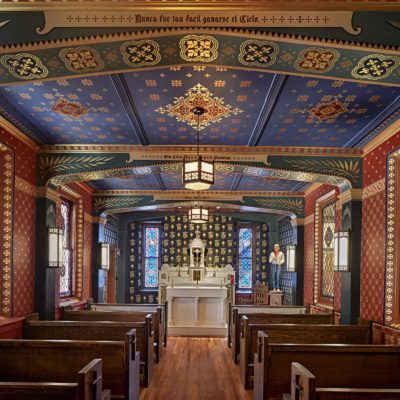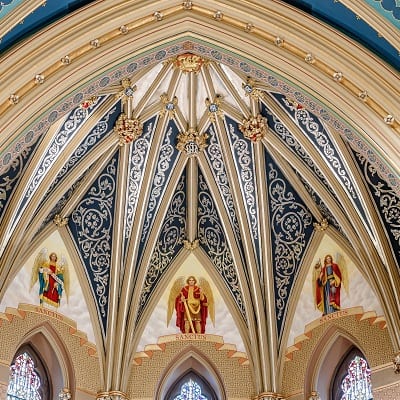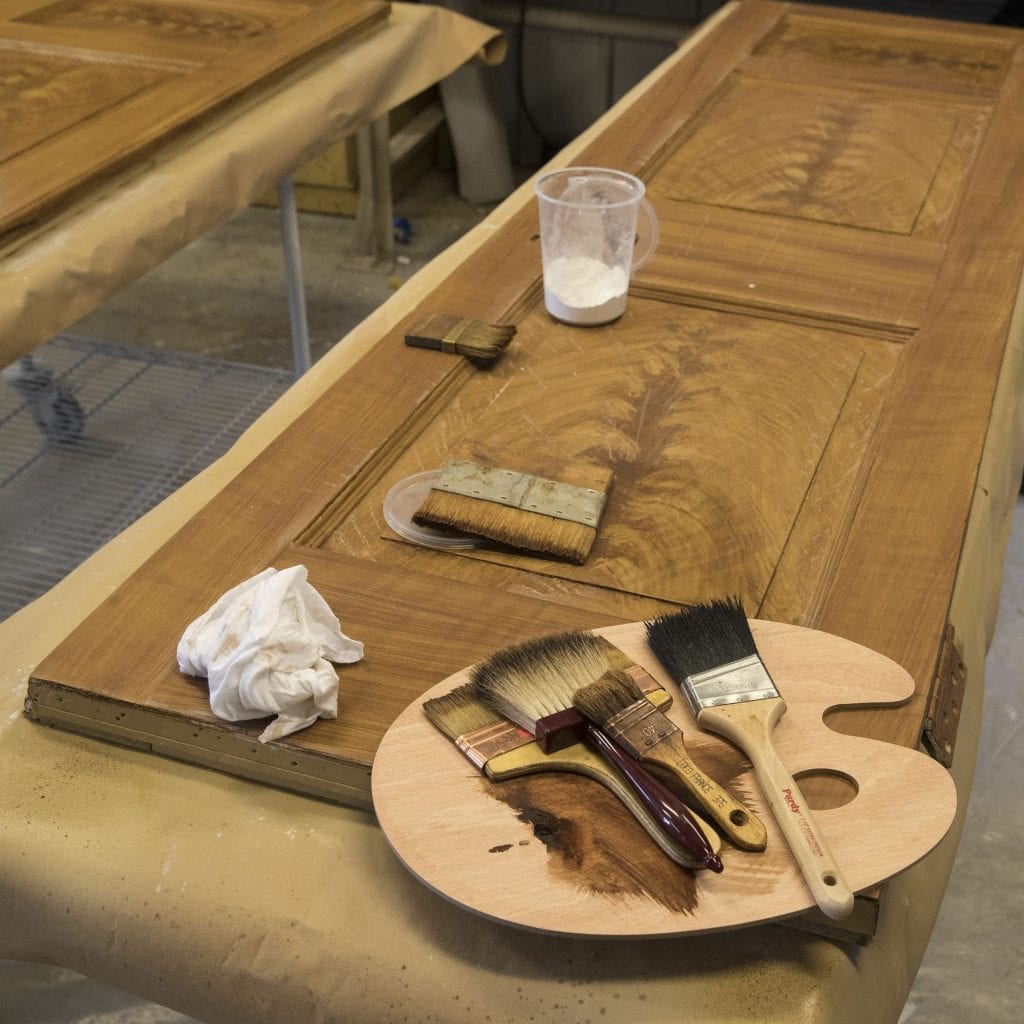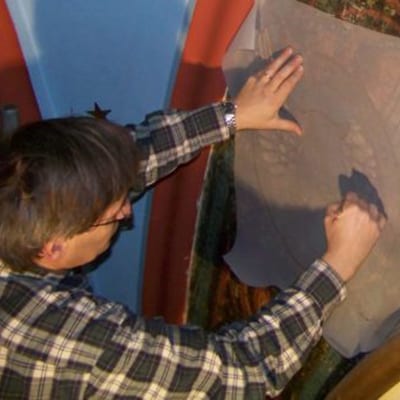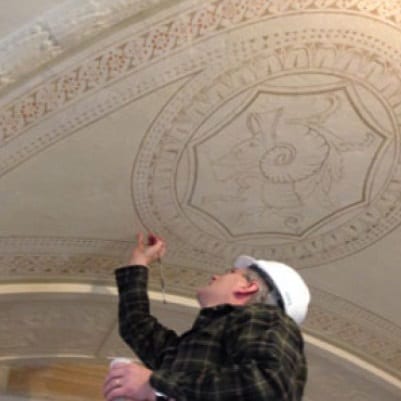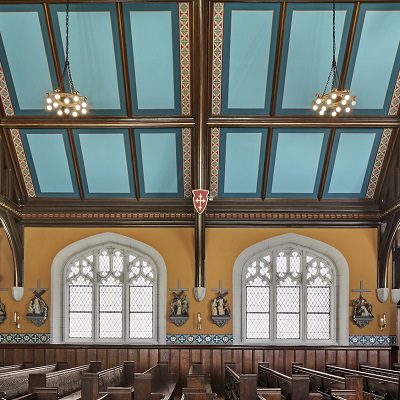What qualifications makes a good decorative painter? Beyond being unafraid of heights and having a very steady hand, there are key qualifications that set a good decorative painter apart from the rest. When looking to hire a firm or individual to restore/recreate a historic paint surface, understanding what needs to be done and matching it to the firm/artisan with the right experience is paramount. There are many historic painted surfaces out there—marbleizing, trompe l’oeil, stenciling—and just because someone has a large body of experience doing one of them, does not mean they can perfect others while working on your project. Here are some things to look for when hiring a decorative painting restoration contractor:
Qualifications:
“Paper qualifications” are always a good place to start. There are several key organizations and international standards that any good decorative painter should follow.
Standards
Any contractor you hire should adhere to the standards stipulated by the Painting and Decorating Contractors of America (PDA) and the “Code of Ethics” and “Guidelines for Practice” of the Institute for Conservation of Historic and Artistic Works (AIC). Additionally, they should follow specification and standards articulated by the Association of Preservation Technology International (APT).
Licensed
Permits and licenses vary based on state, but it is paramount that any contractor, or decorative painter you hire furnish the appropriate licenses and pull the proper permits needed to complete the project. Note: if the scope of the project changes during the course of the work, reassessing what licenses and permits are needed would be cogent.
Experience:
Obtaining a portfolio of past project and past proposals from complete projects can give you a wealth of information on the perspective firm. Similarly, you can see how well they brought the vision to fruition.
Body of Work
Experience can be make-or-break on any project. Even the best laid plans can go array. It is not uncommon for a client to require that a perspective firm/individual has completed numerous projects of a specific nature—marbleizing, stenciling, etc.. General knowledge of decorative painting can be helpful, as often projects combine multiple decorative painting techniques. Obtaining references, both from client and tradesmen, is an important step in reviewing the success of past projects. Moreover, ensure that a perspective artisan have experience with a project of your scale and scope.
Accuracy Matching Historic Finishes
Testing should be conducted to determine exact composition of substrate and the surface to which it has been applied. This information should then be interpreted correctly be a skilled restoration professional. Data collected can help identify if the finished surface is a paint, glaze, or scumble and can give additional information about what comprises the pigments used in the paint.
Appropriate Mockups/Samples
In advance of commencing work, an artisan or design studio should be able to provide you a mockup of finishes that will be carried out to complete your project. Creating and reviewing a project pallet with a client is an important final step before a decision is made about who to hire. It gives you the opportunity to review samples of complex finishes, like marbling, on a large board.
Knowledge:
Understanding of design and color and how they interact is extremely important—especially if changes are being made to an original design, if a design is being recreated, or if a design is being modernized with lighting.
Color Theory
Understanding how colors interact with space, other colors, and the impact they have on both a physical space and the individual comprises color theory. Knowing how colors interact with each other on a surface, which colors work well and which should not be mixed— usually this is dictated by the color wheel. Colors opposite one another on the color wheel are referred to as complementary colors. While red and green are opposite on the color wheel, it does not mean that all shades of these colors will perfectly complement each other—the color hue, family, and/or tone determine which shades best match.
Design Knowledge
Decorative painting is art and since this form of art is not confined to a framed area, but rather an entire room, understanding scale and space is important. The scale of a design is often hard to get right, while there are classical principles like The Golden Ratio, it is unique to every space and can be affected by light exposure, textiles, interior lighting, addition of gilding, furniture, and room flow. In the case of a restoration with existing detailing still in place, exact knowledge of this is not as important, but if a design is being recreated from primary or secondary recourses, this knowledge becomes crucial.
Historic Composition
Color and design can transform a space, but if the finish does not match what already exists, the entire effect can be ruined, instantly. Knowing how to recreate surface finishes started with mimicking original substrate composition. Perhaps an important place to start is paint vs. glaze. vs. scumble. Having knowledge of what material has been applied to the surface helps and expert appropriately prep the treated area, properly mix and match the finishing materials for seamless continuity, and prevent chemical interactions that could damage the surface due to incorrect mixture of substrate. Often, this knowledge is directly linked to past projects, extensive experience in the field, and also comprehensive review of primary documents on the subject.
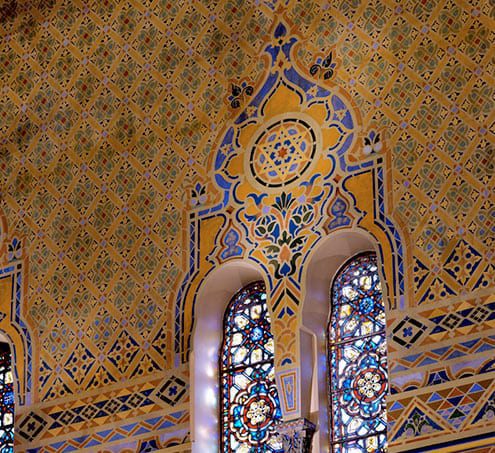

Choosing the Right Partner for Your Project
Whether you are restoring or recreating a historic paint surfaces, selecting the right decorative painting restoration contractor for your project is essential. The qualifications, experience and knowledge mentioned are the key things to look for when hiring a decorative painter.



